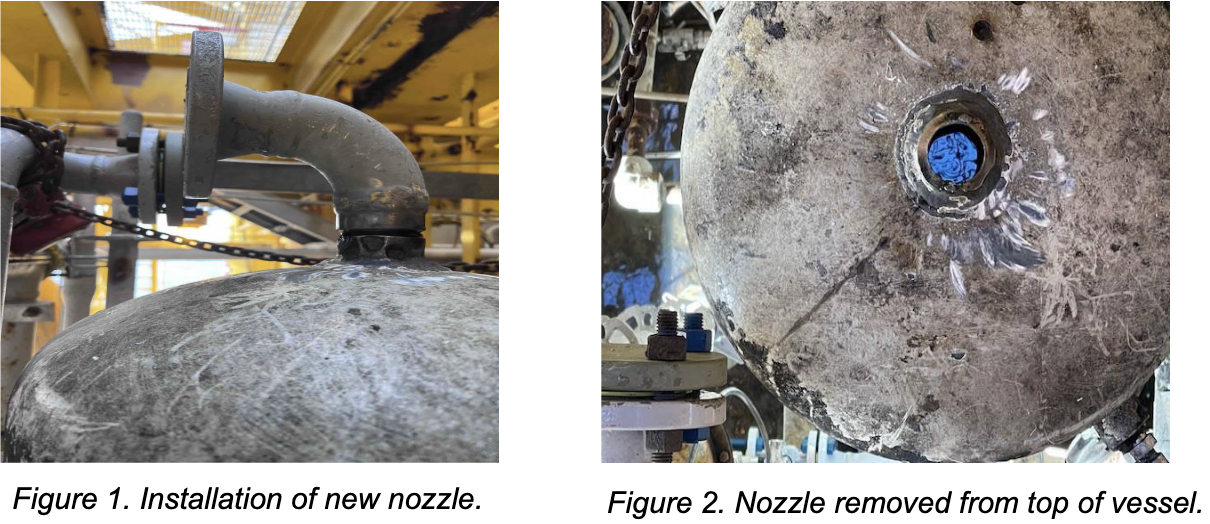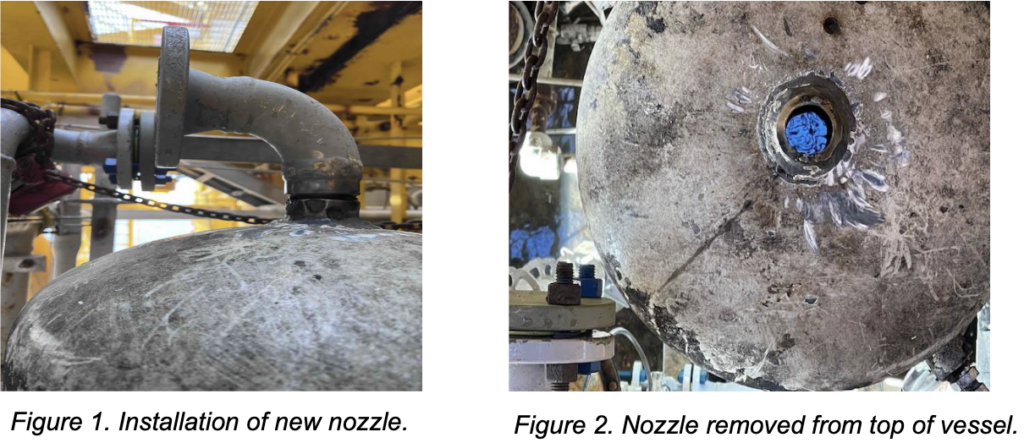 The Bureau of Safety and Environmental Enforcement (BSEE) was recently notified of an incident that highlights the potential risk of flash fires in offshore industrial environments, which can often result in severe injuries or fatalities if proper safety precautions are not followed.
The Bureau of Safety and Environmental Enforcement (BSEE) was recently notified of an incident that highlights the potential risk of flash fires in offshore industrial environments, which can often result in severe injuries or fatalities if proper safety precautions are not followed.
The incident occurred during a welding operation with a fit-up nozzle (Figure 1). As the welder was completing the first tack weld and commencing the second, vapors inside the tank ignited, triggering a flash fire and a subsequent blast that propelled the welder against a rail. The welder was properly tied off, so did not sustain injuries.
Incident Details:

Preparations preceding the incident involved cutting a nozzle off the top of a pressure vessel1 (Figure 2), with supervisor approval to proceed. After cutting and grinding the bevel, operations were paused until the necessary spool piece arrived. Once the spool piece was received the following afternoon, cutting and beveling of the spool commenced.
Initial readings indicated a 0% lower explosive limit (LEL)2 after cutting all nozzles off. Despite the installation of a new nozzle and the successful tacking of one
side, the occurrence of the flash fire during the second tack weld underscores the importance of vigilance and thorough safety checks. Subsequent LEL sequence checks yielded readings ranging from 0 to 70%, emphasizing the unpredictable nature of these types of operations and the necessity for stringent safety protocols.
Personnel outside the immediate area where the incident occurred, including those in the office, were startled by the blast. Subsequent checks confirmed the vessel was filled with water and equipped with the appropriate inlet and outlet skillets, ensuring its safety.
Hot work was being conducted on the fuel gas scrubber, with preliminary checks for LEL and water levels in the scrubber conducted prior to welding. However, during the welding process, an unexpected blowback of white smoke occurred. This indicated a sudden ignition event. The presence of water in the tank suggests that the flash fire might have been caused by residual flammable gases or vapors trapped in pockets within the vessel or in the scrubber system. The heat or sparks from the welding process ignited these gases, leading to the blowback and the resulting blast. This incident demonstrates the importance of thorough ventilation and gas detection processes, even in seemingly safe environments.
Contributing Causes for Flash Fire Include:
- The initial successful tack weld likely disturbed the vapors inside the tank, setting off the ignition when the second tack weld was attempted.
- Despite being properly tied off, the blast from the ignited vapors propelled the welder against the rail, indicating inadequate safety precautions or insufficient distance from the potential hazard zone.
- Although the LEL was initially checked and found to be 0%, after cutting and grinding the bevel, subsequent checks revealed LEL readings ranging from 0 to 70%. This discrepancy suggests a failure to adequately assess and monitor the presence of flammable vapors.
- The occurrence of blowback with white smoke during the welding process suggests a potential flaw in the welding procedure or technique, which may have contributed to the ignition of vapors or other safety hazards.
CLICK HERE for the Alert
